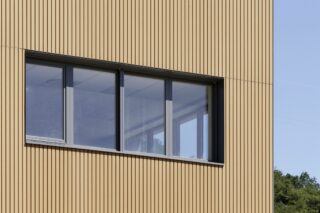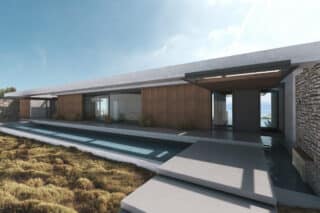Construction glass is a building element that will never go out of fashion. Its remarkable flexibility makes it a reliable construction material that speeds the work and is ideal for embellishing facades. Since the construction boom of the 1990s, the Middle East, and Dubai in particular, have seen building designs that could be looked upon as architectural wonders.
According to Allied Market Research figures, the global construction glass market is expected to reach US $121.877 million by 2022, a 7.1% increase over 2016. For example, there are at least 10,000 ongoing construction projects in the Middle East that require glass for cladding buildings.
In addition to using it as an aesthetic material, architects and developers are looking to glass technology to maximize natural daylight while providing thermal insulation. Firoz Kachwala is director of manufacturer Future Architectural Glass, present in the UAE for 40 years.
“Summer temperatures in the Middle East have soared to 50°C, even 60°C. These are really tough conditions under which glass is used by the developers. That’s why it’s important for manufacturers to stay ahead of the game by creating and supplying glass that suits their needs.”
To Handle With Caution
A current solution is ecoTHERM high-performance insulated glass, which offers enhanced solar control and gives the customer a choice of tints. Kachwala says, “ecoTHERM, if not handled correctly during processing, can get damaged. Our furnace facility has been designed for such high-performance glass. With advancements taking place in glass, whether it’s using single, double, triple, or quadruple silver coatings, our production has geared up to process the sensitive glass.”

City Walk Jumeirah is a major development by Meraas developers. This luxury shopping and dining destination in Dubai, which includes luxury residences, required a facade exuding a sense of opulence. For one of the projects at this location, Future Architectural Glass used MeshDecolam specialty glass with a polyester mesh 260 microns thick.
Building with Health in Mind
Anoop Sreekumar, specification manager for Middle East Markets at Saint-Gobain, states that the health and wellbeing of employees continue to be a central aspect of design. He says:
“The World Green Building Council 2014 paper states that unsuitable indoor temperature can reduce people’s work performance by four to six percent. Our specialty Sage Glass is an electrochrome glass whose unique tinting properties allow visible light in while avoiding unnecessary glare and heat.”

Swiss International Scientific School. Its sports facility will include Sage Glass to meet stringent Swiss Minergie standards for sustainable buildings. Saint-Gobain worked with DSA Architects on the design which called for five-meter glass panels. Since the largest Sage Glass panels measure only three meters, Saint-Gobain suggested a design change to accommodate a combination of three-meter and two-meter panels. The firm also created software to “pixelate” the facade by controlling the tints of the Sage Glass.
Glass is manufactured with photochromic technology, first used in the building industry in 2003. “We then introduced Sage Glass in 2015 due to the growing demand for advanced glass solutions in the industry for both sustainability and wellbeing purposes.” In addition, the company’s Vetrotech Saint-Gobain department produces specialty fire-rated glass, such as Vetrogard and Contraflam.
Read more about Sage Glass here.
A Pearl with a Glass Facade
In August 2017, Developer RKM Durar Properties launched the J One towers project designed by QHC Architects & Engineers. The shape of the building is said to be inspired by the extraction of the most expensive pearl, the J One. Its key attraction is a sky restaurant enclosed in a glass bubble where diners can enjoy views of the Burj Khalifa.
As of now, work on the three basement levels is underway, with Abu Dhabi-based Ali & Sons as the main contractor. The target is to finish the entire project in the third quarter of 2019.












